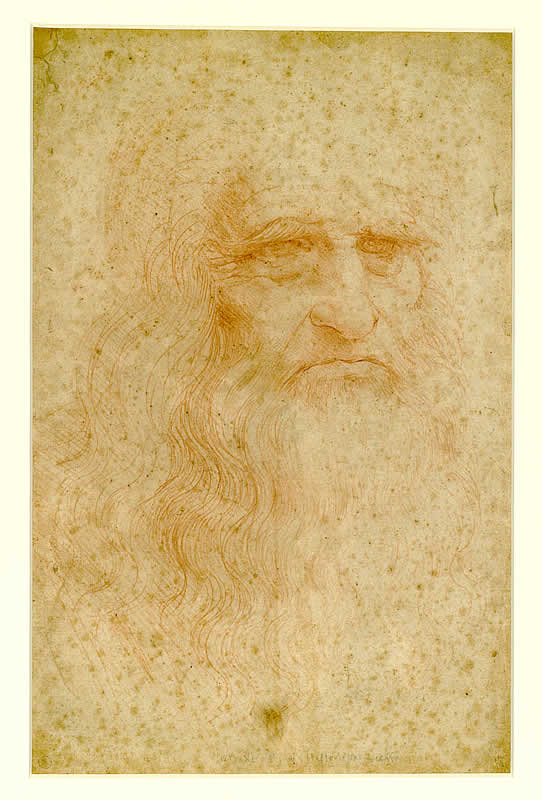Leonardo's self-portrait
Leonardo was probably about sixty-three years old when, in about 1515, he drew the sublime likeness of the venerable, bushy-browed, elderly man that appears on the page.
Rivers of words have been written about the drawing conserved in Torino. Doubt has been expressed as to the authenticity of the portrait, and several scholars have advanced hypotheses without arriving at definitive conclusions. In any case, the traditional conviction that the portrait truly is that of the genius from Vinci (supported by the Cinquecento handwriting of the caption in addition to numerous other factors) has never been overthrown.
Academic exertions aside, the most haunting words written about the likeness are those of the one who perceived in those hoary eyes lo sguardo di chi troppo ha visto, di chi è andato troppo lontano, ed è rimasto solo, e fissa in faccia la Morte (the look of one who has seen too much, who has gone too far, and has remained alone, and stares into the face of Death).
The drawing arrived to Torino in 1839, when Carlo Alberto of Savoy purchased an extraordinary collection of 1,600 antique drawings for the city’s Royal Library. The seller was Giovanni Volpato, an antiques dealer, restorer and etcher who had devoted his life to hunting for antique drawings all over Europe. Leonardo’s self-portrait was part of a group of thirteen sheets containing some of the many studies and sketches that document the meticulous process of elaboration through which he perfected his creative procedures, and his scientific observations of nature. How and where Volpato found these precious sheets remains a mystery. The other very famous drawing in the group, still today conserved in the Royal Library, is the preparatory portrait of a young girl for the angel of the Virgin of the Rocks.
The state of conservation of Leonardo’s self-portrait has been the source of great concern. The Maestro, who probably sketched his likeness for his own purposes and never intended it for posterity, used a poor-quality paper, which has rendered the work extremely fragile.
Recent analyses have revealed the paper’s composition, in which are found fibres of hemp, flax and fragments of coloured wool. The paper shows signs of severe damage by a phenomenon of oxidation known as foxing, which weakens the fibres and leads to a proliferation of brownish-red spots.
The self-portrait is exhibited only on rare occasions, and is conserved in a special vault where the temperature and humidity of the environment can be carefully controlled.
translation by Kim Williams

